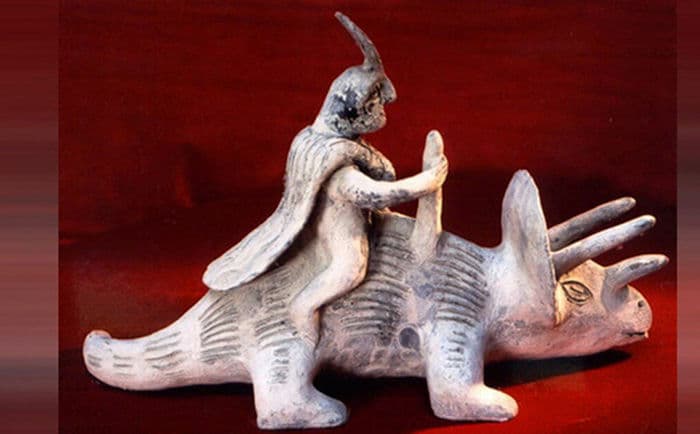Seventy-six years ago, a discovery of 33,000 clay figures in Mexico sparked a debate over whether humans and dinosaurs once coexisted. These mysterious stone figures led scientists to question if ancient humans lived alongside dinosaurs.



The general scientific consensus is that dinosaurs lived from about 220 million to 65 million years ago, while Homo sapiens emerged around 200,000 years ago. This timeline suggests that humans and dinosaurs never overlapped.
However, archaeological finds challenge this viewpoint. In July 1944, Waldemar Julsrud, a German trader, stumbled upon a dinosaur-shaped clay figure near Acambaro, Mexico. As an antiquities collector, Julsrud recognized the figure’s oddity and began an extensive excavation in the area, unearthing approximately 33,000 additional clay figures.

The collection primarily consists of creatures resembling ancient animals, including depictions of humans and dinosaurs living together. This unusual discovery piqued the interest of archaeologists worldwide, as the sheer size and variety of the Acambaro figures make it one of the most valuable collections globally.
Skeptics have tried to discredit the Acambaro figures, arguing that they may be modern forgeries. In 1956, American archaeologist Charles Di Peso traveled to Mexico to assess the authenticity of the figures. He found that most of the clay sculptures were in relatively good condition, with little dust in their cracks. Di Peso initially estimated the figures to have been buried only ten years prior to their discovery.

Di Peso also raised doubts about the lack of dinosaur fossils in the Acambaro region. He suggested that the figures could have been inspired by creatures depicted in natural history books rather than firsthand observation.
Despite the skepticism, the Acambaro collection continues to intrigue many, as it includes accurate representations of dinosaur anatomy found in the 1944 figures, long before modern scientific discoveries.
How could ancient people describe dinosaurs so precisely without contemporary knowledge? Additionally, the massive production of 33,000 figures would have required a large ceramic workshop, yet no such historical evidence exists.

Given the unresolved nature of the Acambaro figures’ authenticity, the collection remains one of the world’s most captivating archaeological mysteries.
If this article intrigued you, share it with others to explore this fascinating archaeological mystery.

